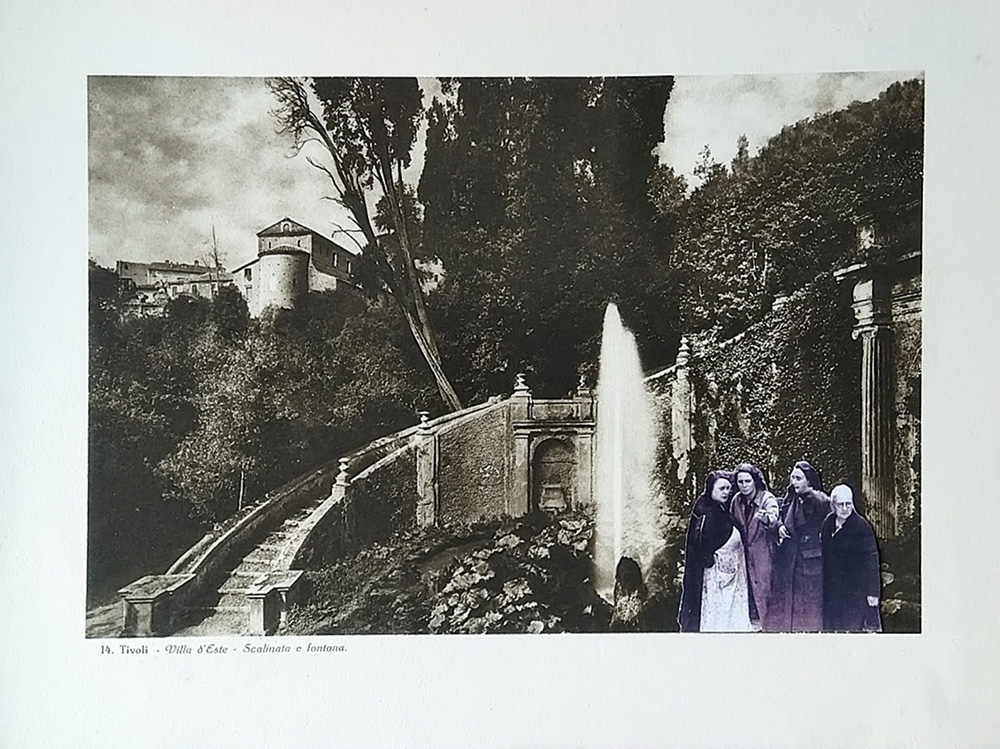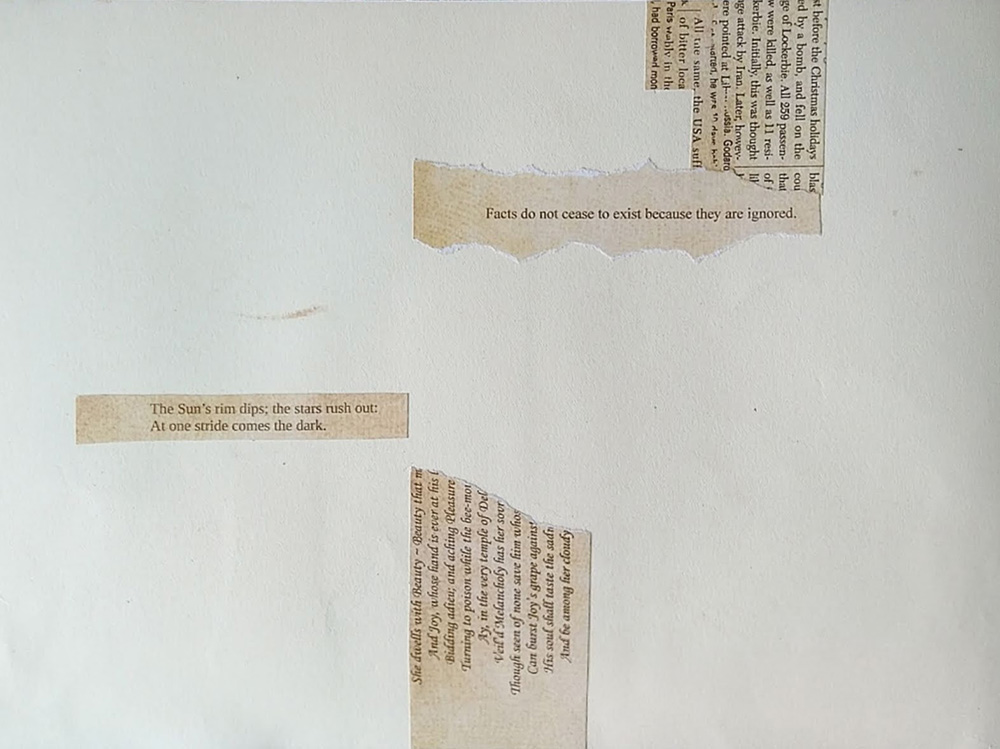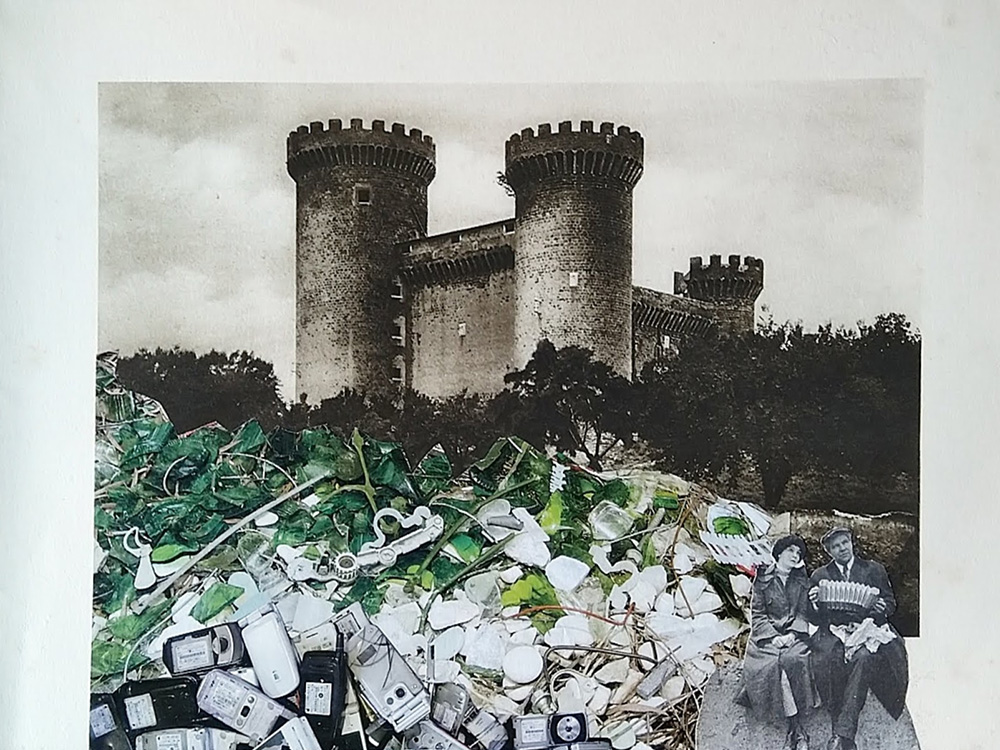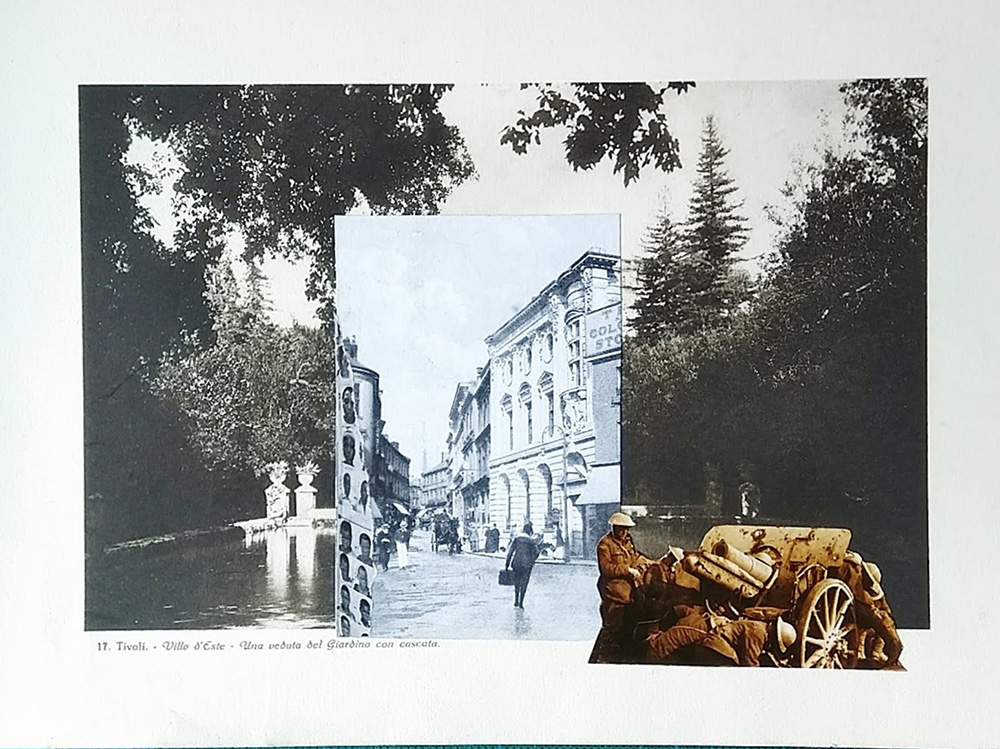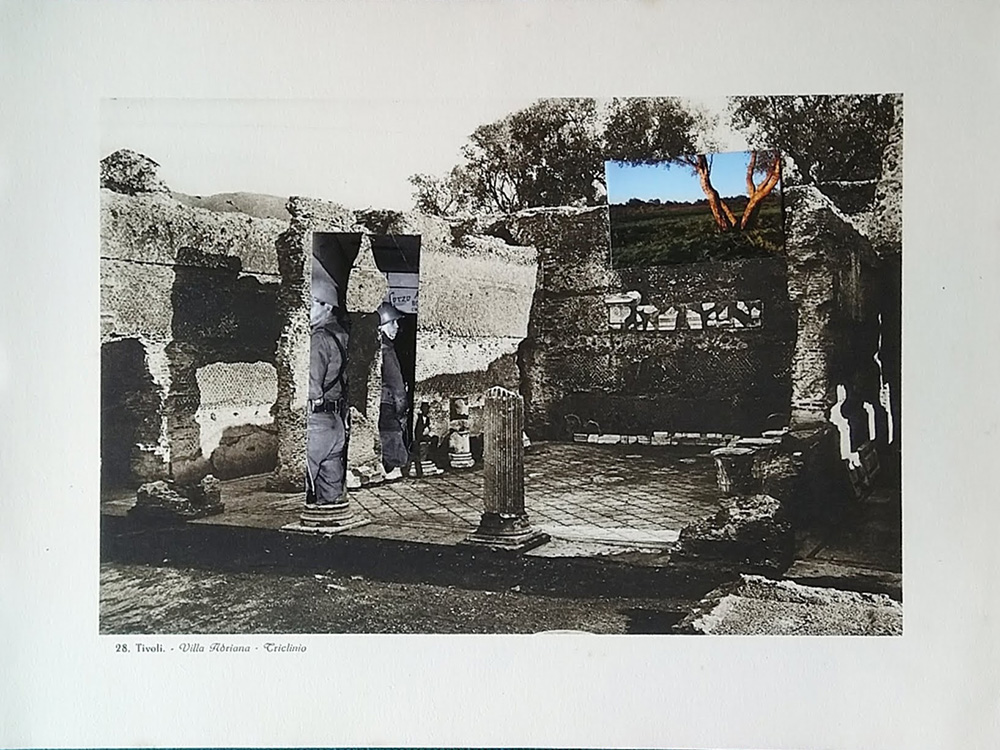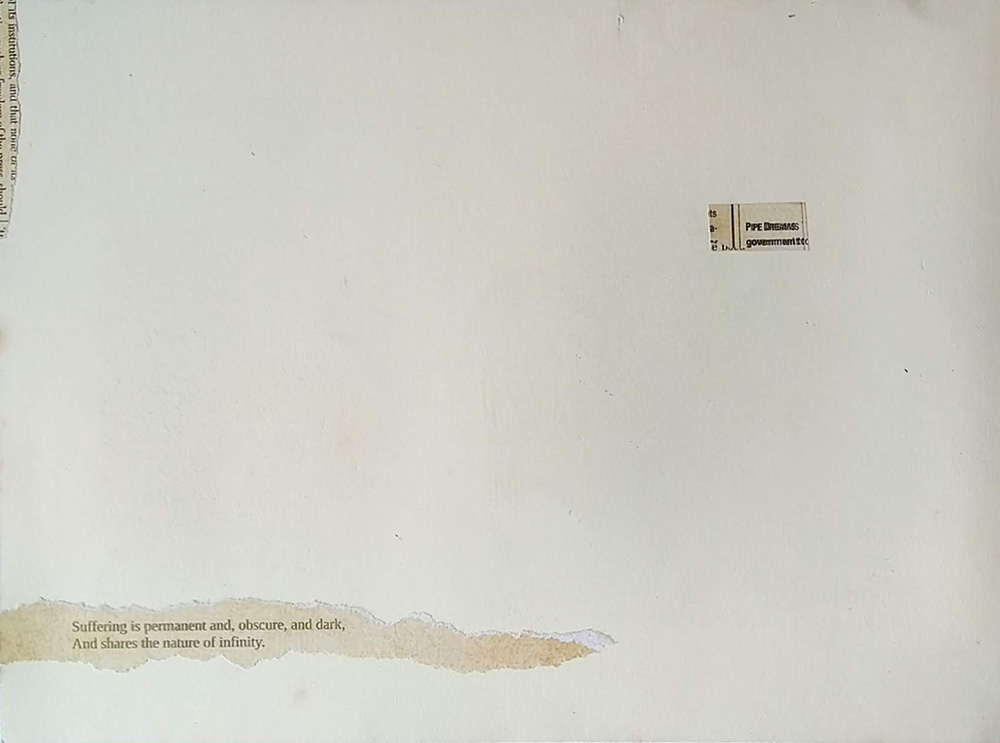MY TIVOLI NIGHTMARES
by Geoff Litchfield
may 12, 2021

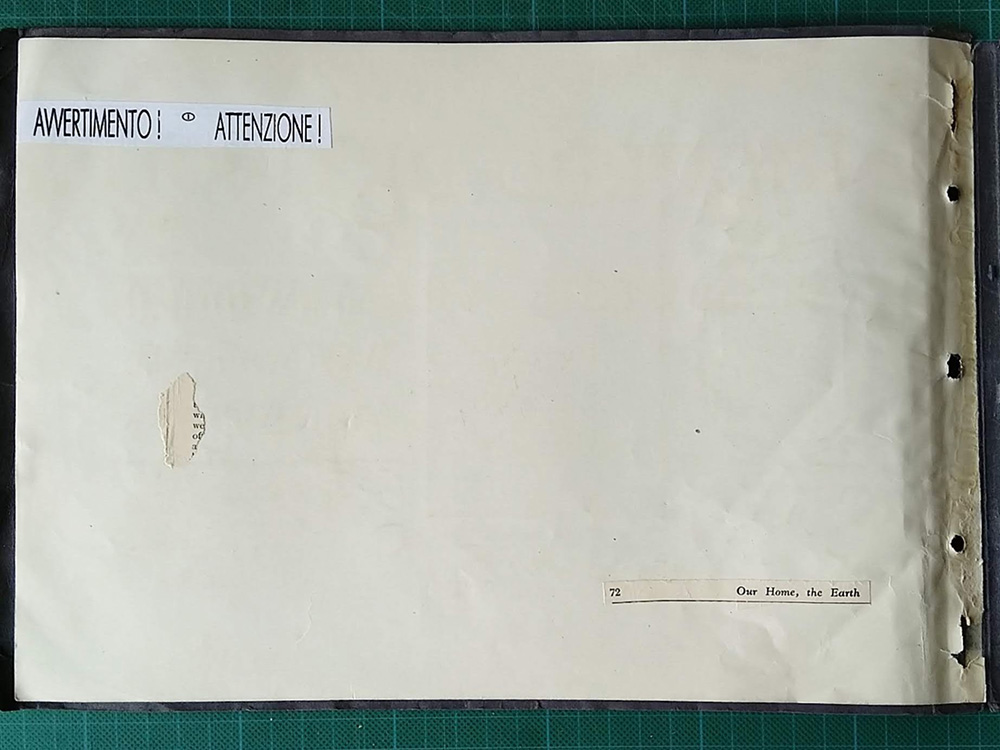


Could you please describe this series in your own words?
I discovered the folio of images in a second-hand bookshop in North Norfolk for three pounds! I loved the quality of the images and printing. The folio felt fragile with foxed pages and generally showing its age. It contained both landscape and portrait images of the Tivoli Gardens in Italy. I thought it would be something I could work with in collage and I especially love things that work in a series. It hung around my work area for quite a while but ideas slowly began to form. I decided that it could become something that could be seen to have a narrative of sorts. I removed all the portrait images and used those as a series of unrelated collages. I resolved to work solely in analogue form (but to later scan the images and then use them to create a companion set of digital works) and to not allow myself to cut the source images in anyway, merely glueing stuff onto the surface. I allowed myself to consider the complete rearrangement of the original order. Images would come from my own photographs, Unsplash and a selection of historical images and cuttings. I also resolved to not have a deadline and to allow the project to evolve organically in its own time.
What are the back pages about?
Well, originally I wasn’t going to do anything with them but fairly early on I stuck a couple of phrases (Attenzione! and the like from an instruction leaflet and a clipping from a vintage science book) on the rear of the frontispiece and they kept nagging at me. I had dismissed collaged pictures on the back of the source images but then considered a sort of “word collage” as an alternative element to the overall narrative. Included are fragments of war poetry in Italian, French and German as well as English and similarly political quotations and pasted cut-up segments from historical accounts of conflict. These elements are arranged in the form of a minimalistic and abstract composition. I liked the idea of a contrasting aspect to the overall narrative whilst still preserving the sense of something “old”. I have subsequently added the titles of each image that they are on the reverse of using Morse Code.
How long did it take you to finish the series?
I worked on the piece on and off for about two years.
Did you do them in a specific order? Did you finish one before starting the next? And how long did you work on individual pieces?
The sequence of the prints changed many times as I considered how the narrative, such as it is, evolved. Although naturally some images got to a state of completion before others I worked on them as a whole thing, laying out several images at a time. I often work quite quickly with collage but, with this project, I would often leave a print in my peripheral vision for days if I wasn't sure about it. I sometimes would pin a piece onto the source image and leave it until I decided whether or not to fix it permanently. So it often was the case that “working” on an individual piece could mean that I spent a couple of days/weeks(?) looking at a temporarily attached cutting and then remove it!
Do you have a favorite and if so which one and why?
I don’t have one particular favourite but I do have elements across the work that I am pleased with. I am intrigued how a minimal amount of interference with an image can totally subvert its meaning and add a whole new layer of possible interpretation. For example, many of the original prints feature a small figure or figures. Of course, many photographers use this as a device to give a human dimension to the scene. However, when that scene then features an atrocity, a calamity or an injustice that figure becomes an observer. Although some of the collages have quite a number of attached elements, I myself am drawn to, and more satisfied by, the ones where I have hardly done anything. Also the relationship between text and image has always fascinated me as has how the title of a work can affect your interpretation. I mean Magritte painting a picture of a glass is one thing but writing “l’Orage” underneath it is even better. Or Duchamp having fun with “Fresh Widow”. I used to love the work of the late John Hilliard and how he explored this relationship in photography.
I know you started this before Covid. Did working during the pandemic change anything about the project or your approach?
Working during the pandemic, particularly during the long periods of isolation made me even more resolved to let the project develop at its own pace and not feel pressure to bring it to a false conclusion or to include unnecessary or irrelevant additions. I know for certain that the project became a much darker piece of work than I first envisaged. In many ways it is a bleak piece. Although it begins with a scene featuring a collaged image of Leicester (where I was born, therefore adding an autobiographical element), it ends with a scene that to me, at any rate, is about a complete abandonment of hope and the end of dissent, such as at the conclusion of Orwell’s 1984. Much of it is about how humankind (probably mankind) is such a paradoxical species, capable of taking or making something beautiful and perverting it through acts of great cruelty or destruction. Yes, so well done Geoff, a great antidote to the worries of living through a pandemic!
Did you learn anything, about yourself, your work, the world, and if so what, or did you have any epiphanies while working on the series?
A lot actually. I learnt that I could be patient for one thing! Things take as long as they take and will, given time, evolve into something that seems rewarding. I have always valued the intervention of chance and the accidental and having a project spread over such a length of time allowed me to embrace the possibilities of change through chance events. I also learned to resist pressure to create work that had a certain look that wasn’t true to myself. Unfortunately seeing excellent work on the likes of Instagram can do that when you are feeling uncertain about your direction.
Do you have any new projects that you are working on?
Well. I have recently completed the digital companion piece to this project and am working long term on some digital reworkings of the discarded portrait prints from the folio. They are loosely inspired by Eduardo Paolozzi’s “General Dynamic F.U.N. series of lithographs and screen-prints. Also, I am teaching myself some bookbinding techniques. Not only do I love books (!) but I think this will help me bring together more coherent narrative sequences. In the short term, I have been trying to post collages that are more playful and upbeat. It probably won’t last ...
Geoff Litchfield @geofflitchfield
Interview: Petra Zehner @petrazehner.art


